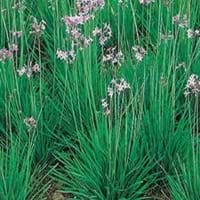Life Span
Perennial
Annual
Type
Fruit, Tree
Bulb or Corm or Tuber
Origin
Not Available
South Africa
Types
Not Available
Not Available
Number of Varieties
Not Available
Habitat
Forests, gardens, Hill prairies, Homesteads, Rocky areas, Woodlands
Tropical regions, Well Drained, Wet forest
USDA Hardiness Zone
Not Available
7-11
AHS Heat Zone
Not Available
10-5
Sunset Zone
Not Available
21,22
Habit
Bushy, Evergreen
Clump-Forming
Flower Color
Light Green, Lime Green
White, Light Pink, Lavender
Flower Color Modifier
Not Available
Bicolor
Fruit Color
Green, Light Green
Yellow green
Leaf Color in Spring
Yellow, Green, Gray Green
Blue Green, Gray Green
Leaf Color in Summer
Light Green
Light Green
Leaf Color in Fall
Yellow, Green, Gray Green
Several shades of Green
Leaf Color in Winter
Yellow, Green, Gray Green
Light Green
Leaf Shape
Ovate
Long Narrow
Plant Season
Spring, Summer, Fall, Winter
Summer
Sunlight
Full Sun, Partial Sun, Partial shade
Full Sun
Type of Soil
Loam, Sand
Loamy, Well drained
The pH of Soil
Acidic, Neutral, Alkaline
Neutral
Soil Drainage
Well drained
Well drained
Bloom Time
Early Summer, Summer, Late Summer, Early Fall
Early Summer, Summer
Tolerances
Pollution, Salt, Soil Compaction
Dry soil, Shade areas
Where to Plant?
Ground
Ground
How to Plant?
Seedlings, Stem Cutting, Stem Planting
Budding, From bulbs
Plant Maintenance
Low
Low
Watering Requirements
Keep ground moist, Requires regular watering, Use Mulches to help prevent water loss during hot and windy weather
Keep ground moist, Never Over-water
In Summer
Lots of watering
Moderate
In Spring
Moderate
Average Water
In Winter
Average Water
Less Watering
Soil pH
Acidic, Neutral, Alkaline
Neutral
Soil Type
Loam, Sand
Loam, Sand
Soil Drainage Capacity
Well drained
Well drained
Sun Exposure
Full Sun, Partial Sun, Partial shade
Full Sun
Pruning
Cut or pinch the stems, Do not prune during shooting season, Remove deadheads
Cut out old flower stalks, Prune ocassionally
Fertilizers
High Potash Fertilizer
fertilize in fall, Nitrogen
Pests and Diseases
Bacterial Blight, Foliage-feeding caterpillars, Moth
Bacterial leaf spot, Nematodes, Purple Blotch, Red blotch, Seedcorn maggot
Plant Tolerance
Pollution, Salt and Soil Compaction
Dry soil, Shade areas
Flower Petal Number
Single
Single
Fragrant Bark/Stem
No
Yes
Foliage Texture
Fine
Medium
Foliage Sheen
Matte
Matte
Attracts
Caterpillar
Bugs, Flying insects, Insects
Allergy
Skin irritation
Dermatitis, Pain and fatigue
Aesthetic Uses
Not Used For Aesthetic Purpose
Showy Purposes, Used in parkland
Beauty Benefits
Blood purifying, Glowing Skin, Good for skin and hair, Provides herbal hair care, Speed hair growth
Acne, For treating wrinkles, Making cosmetics, Removes pimples
Environmental Uses
Air purification, soil stabilisation
Indoor Air Purification, Insect Repellent
Medicinal Uses
Atherosclerosis, Cancer, Diabetes, Diarrhea, High blood pressure, High cholestrol, Obesity, Vitamin C
Acne, Aging, Antidepressant, epilepsy, Nerve pain, Obesity, Vomiting
Part of Plant Used
Fruits
Bulbs
Other Uses
Making Shampoo, Used for its medicinal properties, Used in herbal medicines
Animal Feed, Can be made into a herbal tea, Oil is used in mosquito repellents, Use in Chinese herbology, Used as Ornamental plant, Used for its medicinal properties
Used As Indoor Plant
No
No
Used As Outdoor Plant
Yes
Yes
Garden Design
Cottage garden
Edible, Herb / Vegetable
Botanical Name
Phyllanthus emblica
TULBAGHIA violacea
Common Name
Indian Gooseberry, Amla , Awala
Society Garlic
In German
Stachelbeere
Knoblauch
In French
Groseille à maquereau
Ail
In Greek
Φραγκοστάφυλλο
σκόρδο
In Portuguese
Groselha
alho
Phylum
Magnoliophyta
Magnoliophyta
Class
Magnoliopsida
Liliopsida
Order
Malpighiales
Liliales
Family
Phyllanthaceae
Liliaceae
Clade
Angiosperms, Eudicots, Rosids
Monocotyledonous
Tribe
Phyllantheae
Not Available
Subfamily
Not Available
Lilioideae
Number of Species
Not Available
Importance of Indian Gooseberry and Society Garlic
Want to have the most appropriate plant for your garden? You might want to know the importance of Indian Gooseberry and Society Garlic. Basically, these two plants vary in many aspects. Compare Indian Gooseberry and Society Garlic as they differ in many characteristics such as their life, care, benefits, facts, etc. Every gardener must at least have the slightest clue about the plants he wants to plant in his garden. Compare their benefits, which differ in many ways like facts and uses. The medicinal use of Indian Gooseberry is Atherosclerosis, Cancer, Diabetes, Diarrhea, High blood pressure, High cholestrol, Obesity and Vitamin C whereas of Society Garlic is Acne, Aging, Antidepressant, epilepsy, Nerve pain, Obesity and Vomiting. Indian Gooseberry has beauty benefits as follows: Blood purifying, Glowing Skin, Good for skin and hair, Provides herbal hair care and Speed hair growth while Society Garlic has beauty benefits as follows: Blood purifying, Glowing Skin, Good for skin and hair, Provides herbal hair care and Speed hair growth.
Compare Facts of Indian Gooseberry vs Society Garlic
How to choose the best garden plant for your garden depending upon its facts? Here garden plant comparison will help you to solve this query. Compare the facts of Indian Gooseberry vs Society Garlic and know which one to choose. As garden plants have benefits and other uses, allergy is also a major drawback of plants for some people. Allergic reactions of Indian Gooseberry are Skin irritation whereas of Society Garlic have Dermatitis and Pain and fatigue respectively. Having a fruit bearing plant in your garden can be a plus point of your garden. Indian Gooseberry has showy fruits and Society Garlic has no showy fruits. Also Indian Gooseberry is not flowering and Society Garlic is not flowering . You can compare Indian Gooseberry and Society Garlic facts and facts of other plants too.





